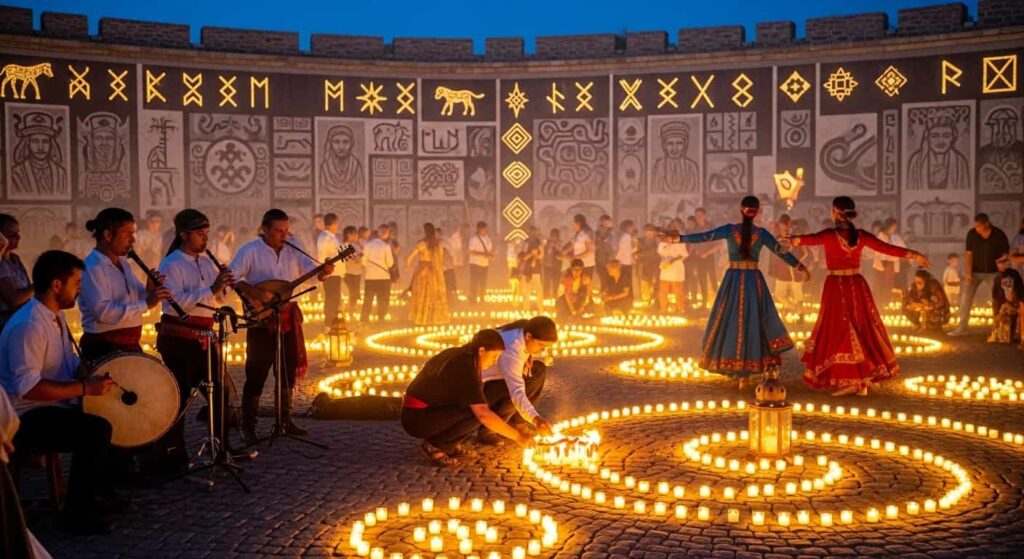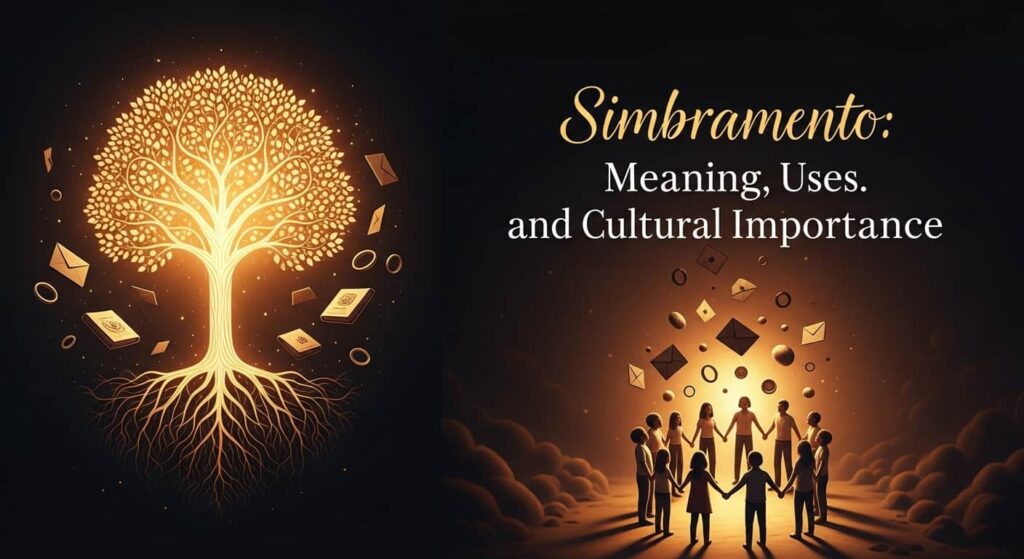Introduction
Language is a powerful tool, and certain words carry depth that reflects history, culture, and identity. One such intriguing word is “simbramento.” While not widely known in every part of the world, this term holds significance in linguistic, cultural, and even symbolic contexts. People often come across “simbramento” in literature, local dialects, or even in philosophical discussions, and yet, its meaning is not always immediately clear.
This article explores the concept of simbramento in detail—its meaning, its possible origins, and the ways it is applied in different contexts. By the end, you’ll have a clearer understanding of how this unique term reflects emotions, cultural identity, and even social connections.
What Does Simbramento Mean?

The word simbramento has multiple layers of interpretation depending on the context. Broadly, it conveys the idea of remembrance, recognition, or a symbolic acknowledgment of something or someone.
It is often linked to:
- Memory: A reminder of past events, traditions, or relationships.
- Symbolism: A representation of values, feelings, or cultural significance.
- Identity: A marker that connects individuals to their heritage or community.
In some linguistic traditions, simbramento is used as a poetic expression that highlights the act of cherishing, remembering, or giving meaning to an event.
The Linguistic Roots of Simbramento
Understanding the etymology of simbramento helps in appreciating its richness. While the exact origins vary across interpretations, many scholars suggest that it is derived from Romance languages, with strong connections to Latin roots.
- The prefix “sim-” often relates to “together” or “similar.”
- The base could link to “membrum” in Latin, meaning part or member, which ties to memory or recognition.
- Over time, local dialects transformed it into simbramento, carrying nuances of both remembering and recognizing.
This layered history explains why the word can mean slightly different things depending on the region where it is used.
Simbramento in Daily Language
For many speakers, simbramento is not just a word but an experience. It reflects how people remember loved ones, respect traditions, or acknowledge shared emotions.
Examples in daily use include:
- A community gathering where simbramento signifies collective remembrance of ancestors.
- A poem using simbramento as a metaphor for nostalgia and longing.
- Personal conversations where the word describes a symbolic gesture of recognition.
Such examples show how the term connects both individual and collective memory.
Simbramento and Culture

Language cannot be separated from culture, and simbramento is deeply cultural. In certain traditions, this word is tied to rituals, art, and community practices.
In Literature
Writers often use simbramento as a way to describe:
- The act of remembering a lost love.
- The symbolic value of an object (like a ring or heirloom).
- The memory of past events that shaped identity.
In Rituals
In cultural rituals, simbramento may appear in:
- Memorial services where communities remember their ancestors.
- Festivals that celebrate traditions passed down for generations.
- Artistic expressions such as songs, dances, or paintings symbolizing shared memories.
In Philosophy
Philosophers and thinkers view simbramento as a bridge between the past and present. It is a reminder that memory shapes identity, and without remembrance, cultural continuity would fade.
The Emotional Weight of Simbramento
One of the most fascinating aspects of simbramento is its emotional depth. It captures feelings that are hard to translate into one English word.
- Nostalgia: It reflects longing for a time gone by.
- Respect: It acknowledges the influence of the past on the present.
- Belonging: It strengthens a person’s connection to their cultural or social roots.
This emotional richness is why the word resonates with people across different backgrounds.
Simbramento in History
Historical texts and oral traditions often include simbramento to describe acts of collective memory. For instance:
- In medieval writings, the word appears as a call to remember fallen heroes.
- In local folklore, simbramento represents rituals of honoring the past.
- In modern times, it continues to describe memorial events and symbolic gestures.
By tracing these historical uses, it becomes clear that simbramento is not only linguistic but also a social and historical phenomenon.
Modern Relevance of Simbramento
While some may view simbramento as an old or poetic term, it still holds value today. In fact, in a world where people are constantly moving and cultures are blending, remembering and symbolizing connections is more important than ever.
- Family traditions: Families use simbramento when keeping traditions alive.
- National memory: Countries celebrate national days that act as a form of simbramento.
- Personal meaning: People hold onto objects or memories as their personal simbramento.
This modern relevance proves that the word continues to live, evolve, and inspire.
Simbramento in Art and Expression

Artists, writers, and performers often draw inspiration from simbramento because it carries such strong symbolic weight.
In Music
Songs that focus on love, memory, or nostalgia often carry the essence of simbramento, even if the word itself is not used.
In Visual Arts
Paintings, sculptures, and photography often symbolize simbramento by capturing memory and identity through visual representation.
In Theater and Cinema
Plays and films use simbramento to depict stories of memory, trauma, or cultural heritage.
In this way, the word influences not just language, but the entire creative landscape.
Psychological Perspectives on Simbramento
Psychologists see simbramento as more than cultural—it also relates to how humans process memory and emotions.
- Memory Retention: Humans need rituals of remembrance to strengthen memory.
- Identity Formation: Remembering traditions builds a sense of belonging.
- Healing Process: Acts of simbramento can help people cope with loss or trauma.
For instance, writing in a journal, visiting memorials, or keeping family photos are all acts of simbramento that provide comfort and continuity.
Simbramento as a Social Bond
Another dimension of simbramento is its role in building social cohesion. Communities thrive when they share a sense of collective memory.
- Religious gatherings use rituals of remembrance.
- National events unite people through shared history.
- Local traditions pass down cultural values across generations.
Through these examples, simbramento becomes a social glue that binds individuals to a larger collective identity.
Global Interpretations of Simbramento
Although simbramento originates in specific linguistic traditions, similar concepts exist across the world.
- In Japan, the idea of “natsukashii” reflects nostalgia and recognition of the past.
- In Portuguese, “saudade” expresses longing and remembrance.
- In English, words like “remembrance” or “memory” are close, though not as rich.
This shows that while the word may be unique, its essence is universal.
Challenges in Translating Simbramento
One of the reasons simbramento is not widely understood is that it is hard to translate directly. Translators often struggle to capture its cultural and emotional depth in a single English word.
- Sometimes it is translated as “remembrance.”
- Other times it is rendered as “recognition.”
- In literature, it may be left untranslated to preserve its unique flavor.
This difficulty highlights how simbramento carries more than a literal meaning—it holds cultural and emotional significance that words alone cannot capture.
Why Simbramento Matters Today

In an age of digital communication and globalization, people sometimes feel disconnected from their roots. This is where simbramento becomes valuable:
- It reminds individuals of where they come from.
- It fosters unity in families and communities.
- It strengthens cultural traditions in a rapidly changing world.
In short, simbramento acts as a timeless reminder of memory, identity, and belonging.
Conclusion
The word simbramento is more than a term—it is a concept, a feeling, and a cultural marker. It reflects the power of memory, the importance of identity, and the value of traditions that bind people together.
From literature and art to psychology and community rituals, simbramento continues to play a role in shaping human experiences. It bridges the past with the present, reminding us that to remember is also to honor, to recognize, and to belong.
Whether encountered in daily conversation, cultural practices, or creative works, simbramento serves as a profound symbol of human connection—proving that memory is not just about the past, but also about the meaning it gives to our lives today.
